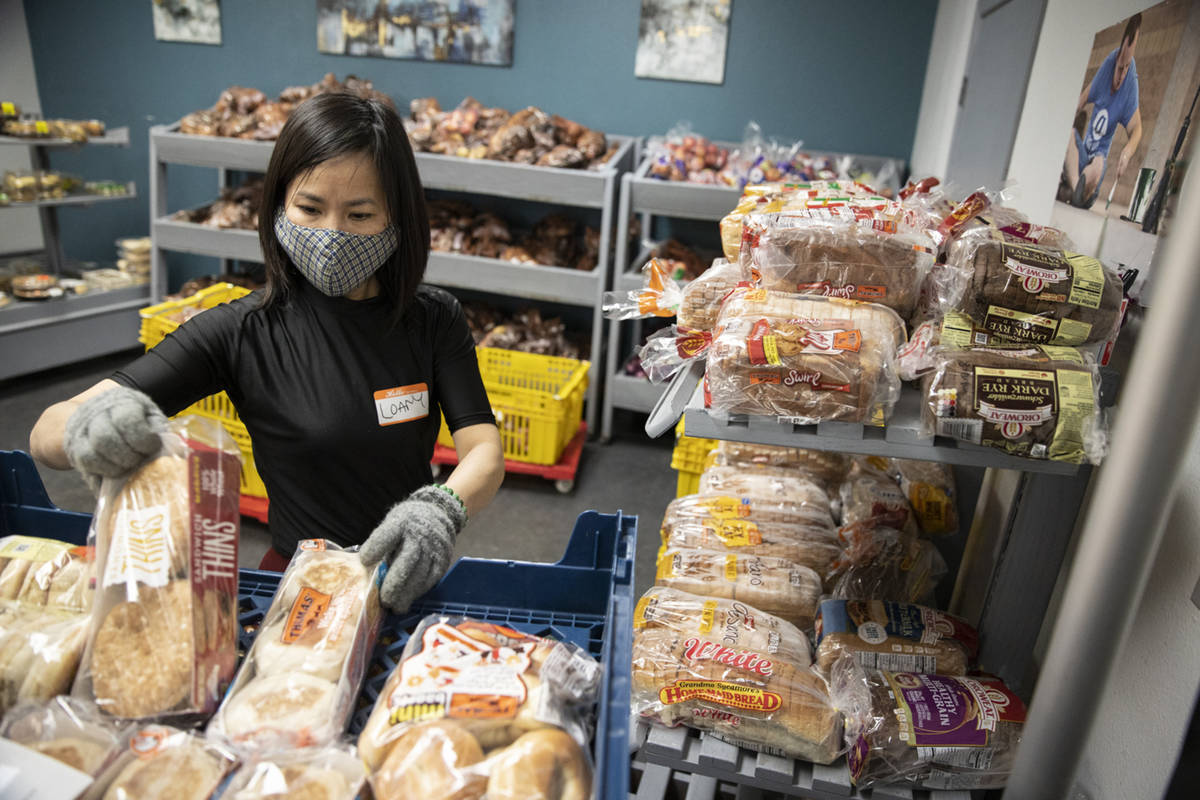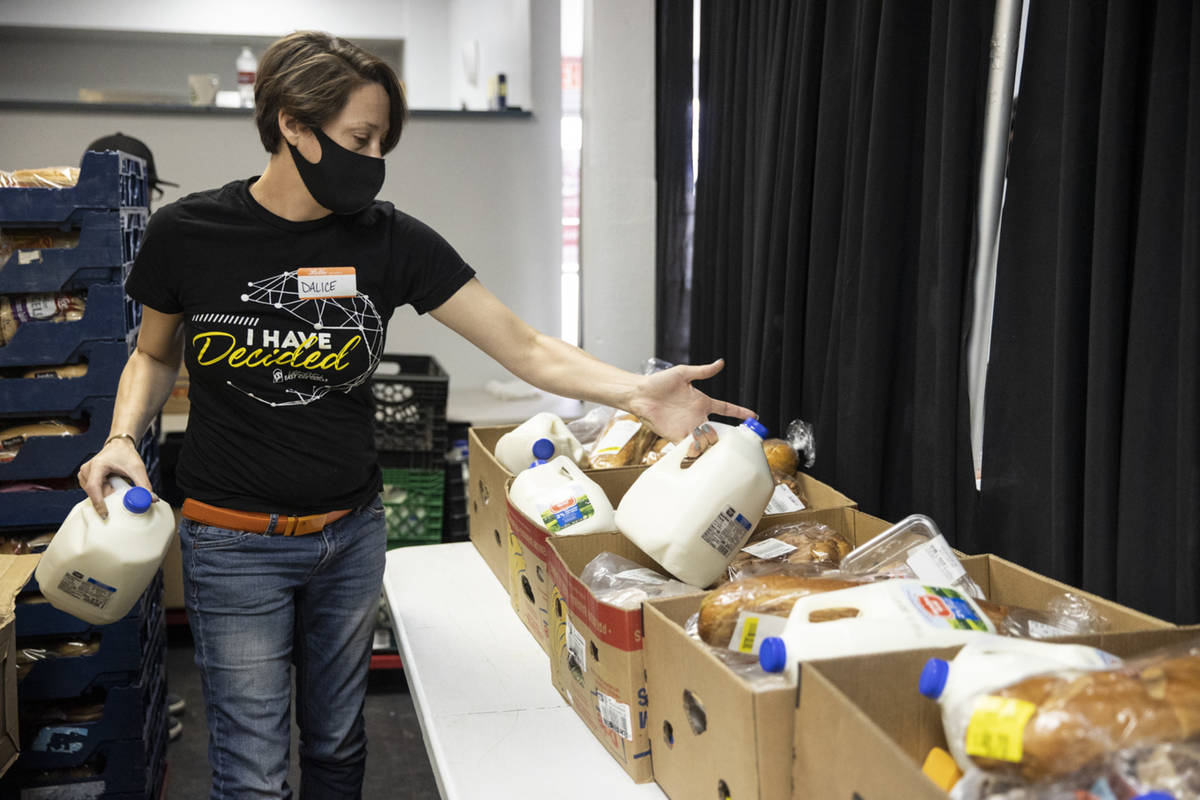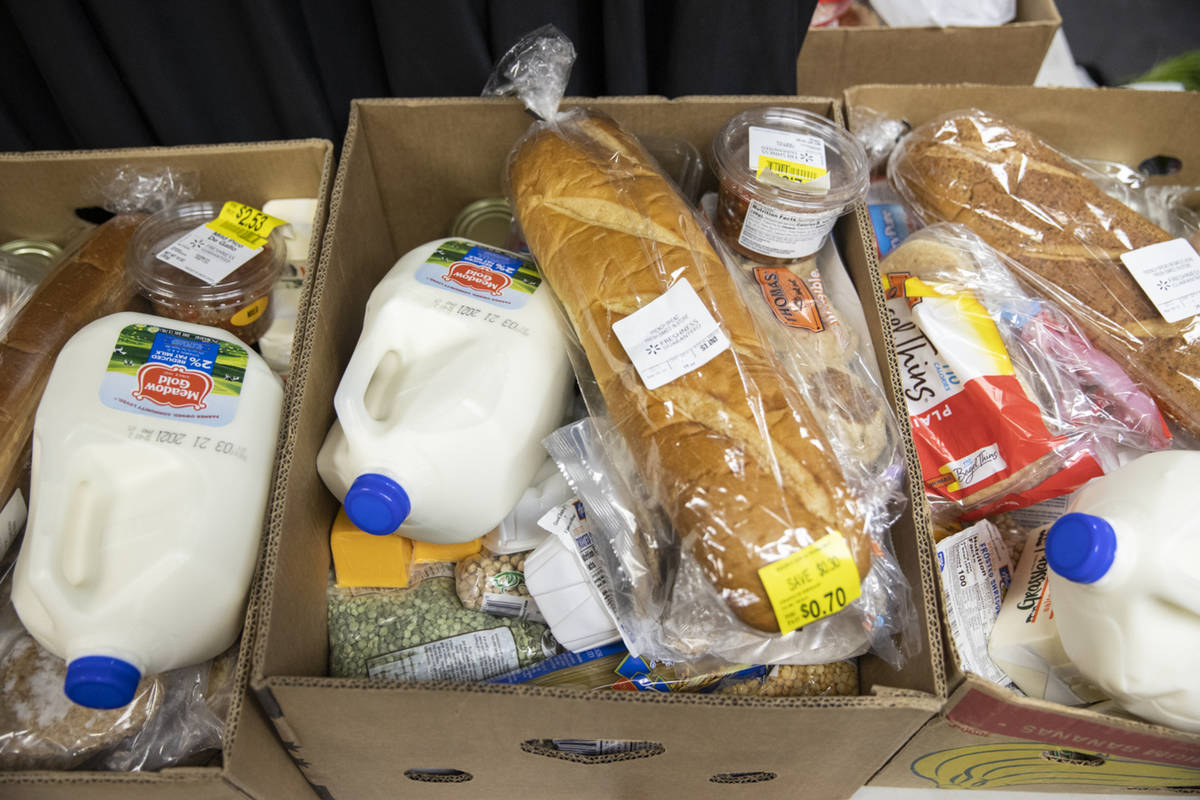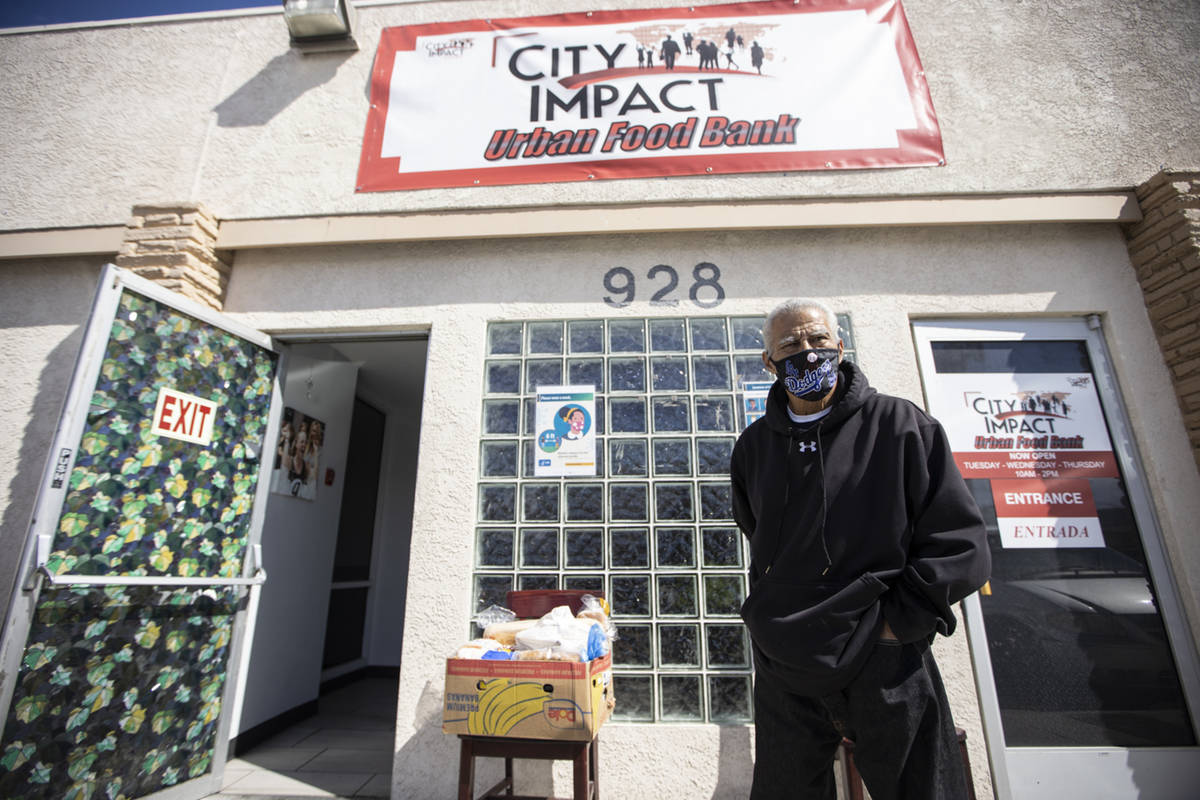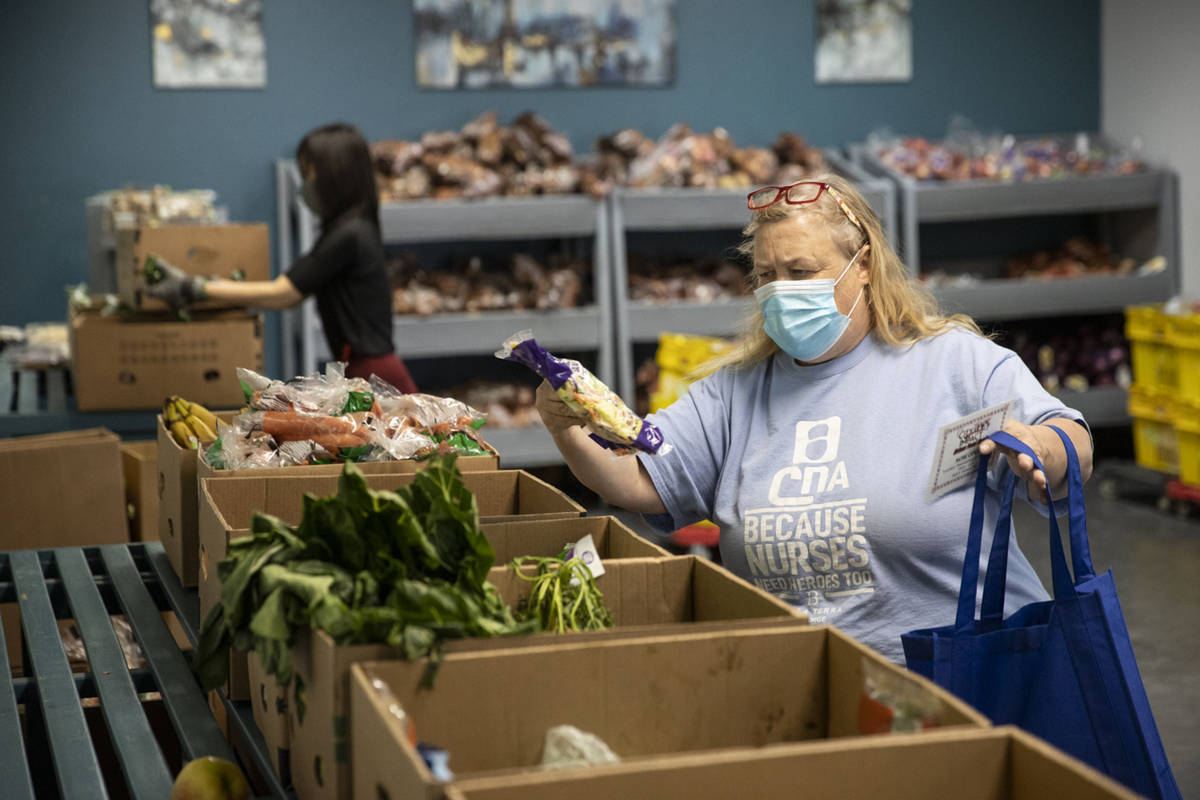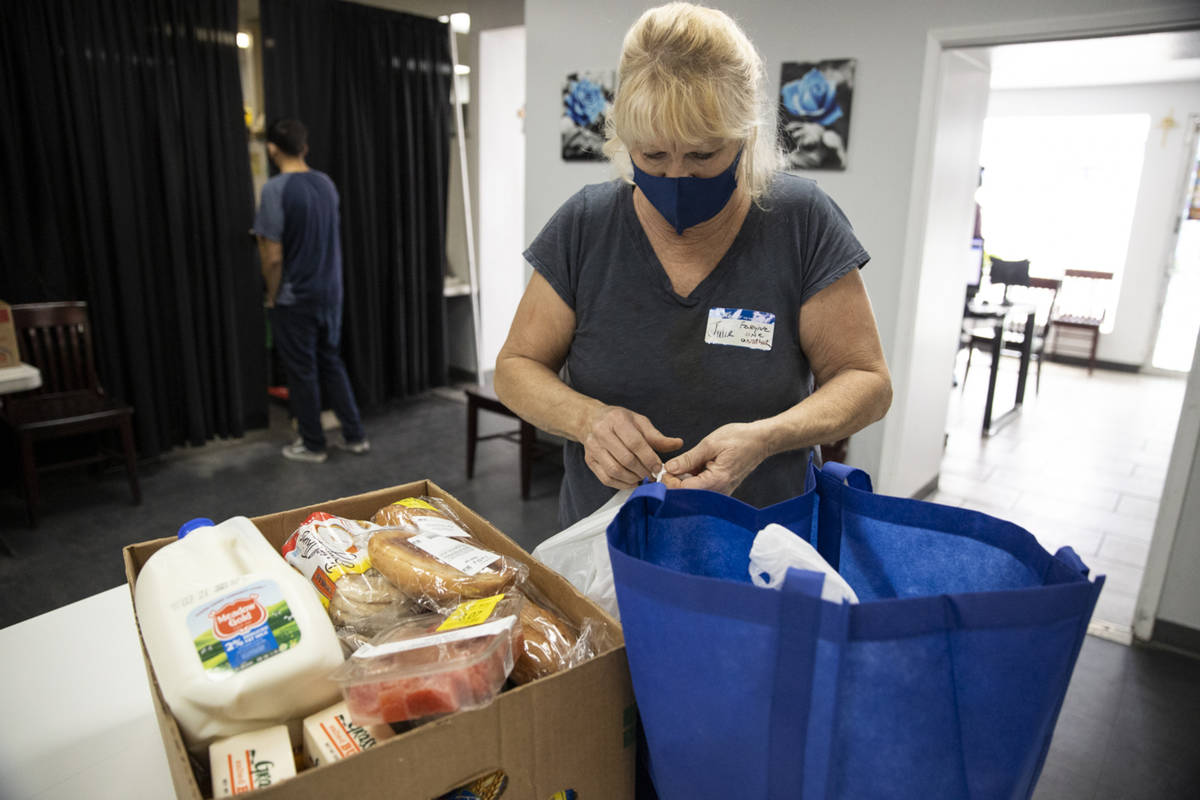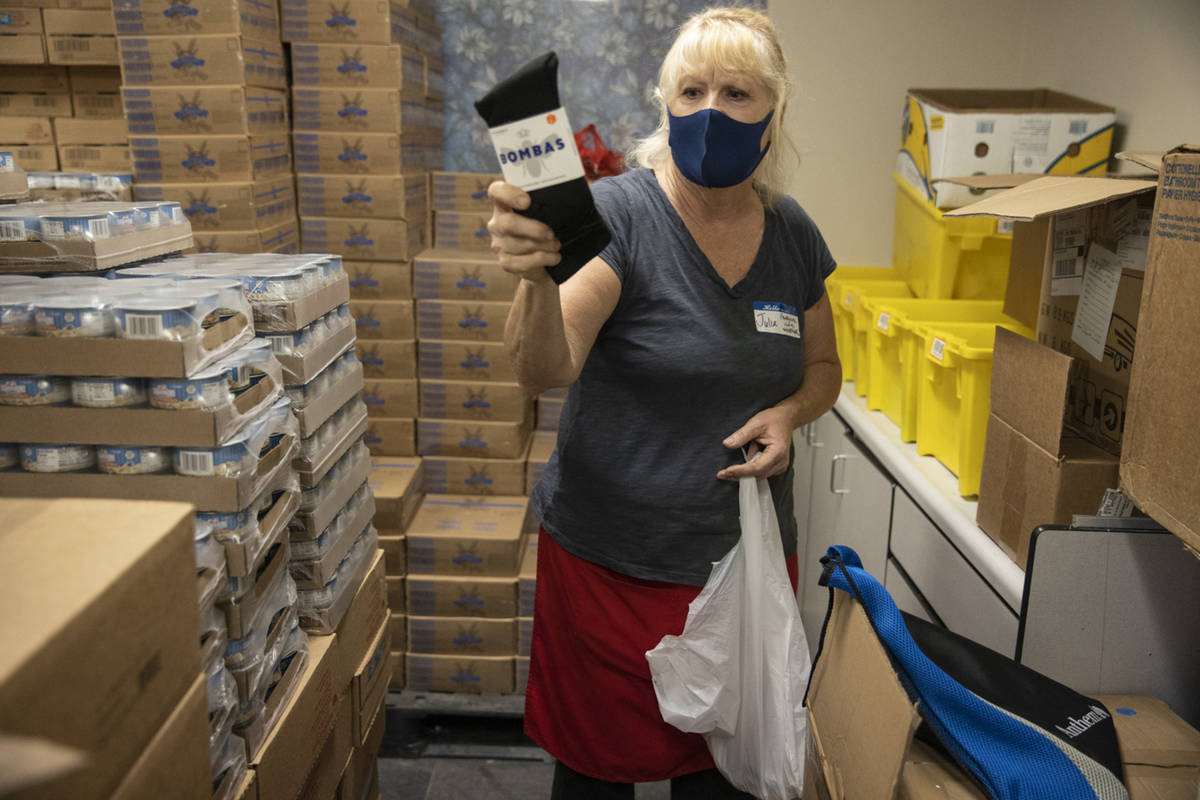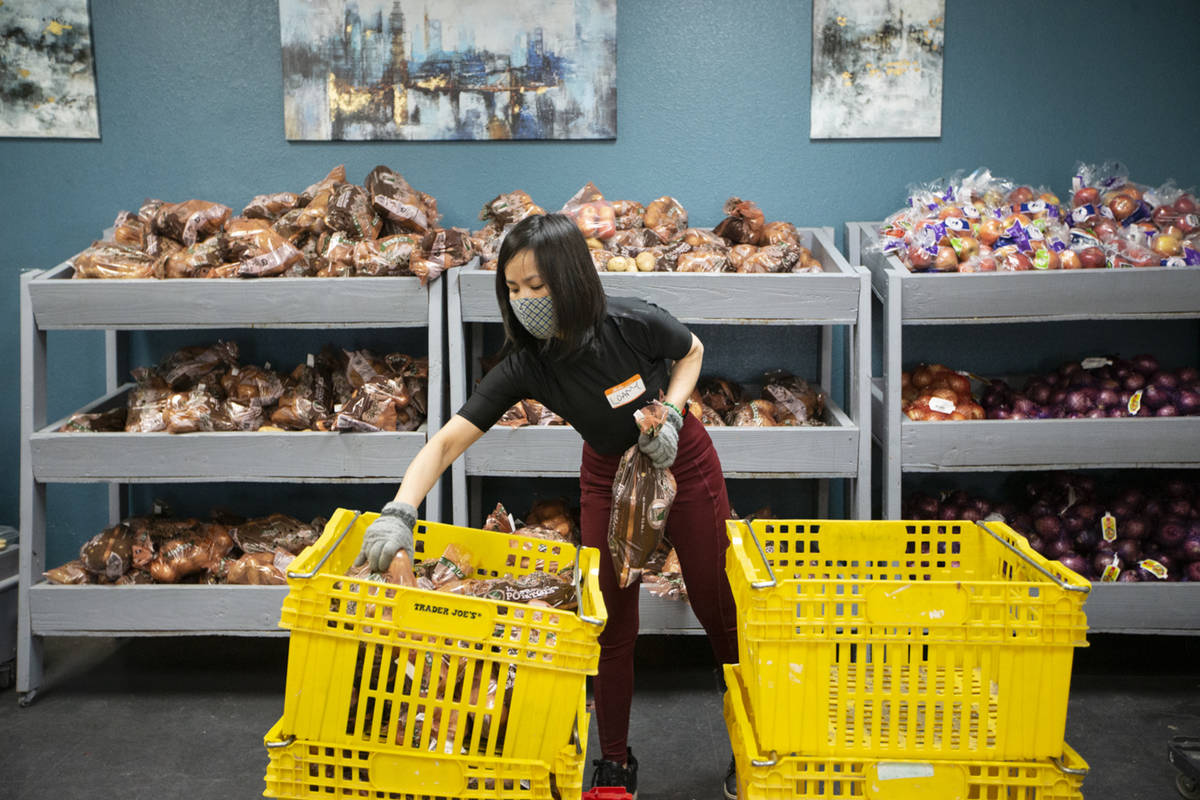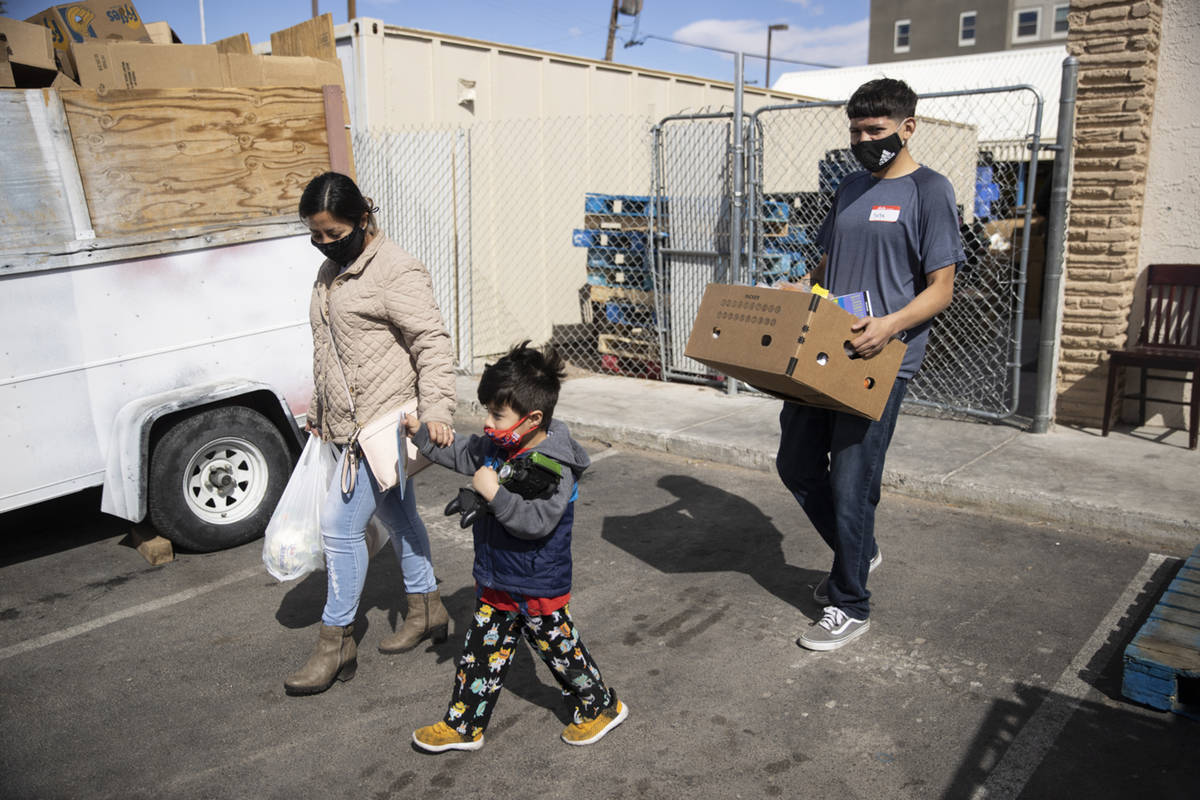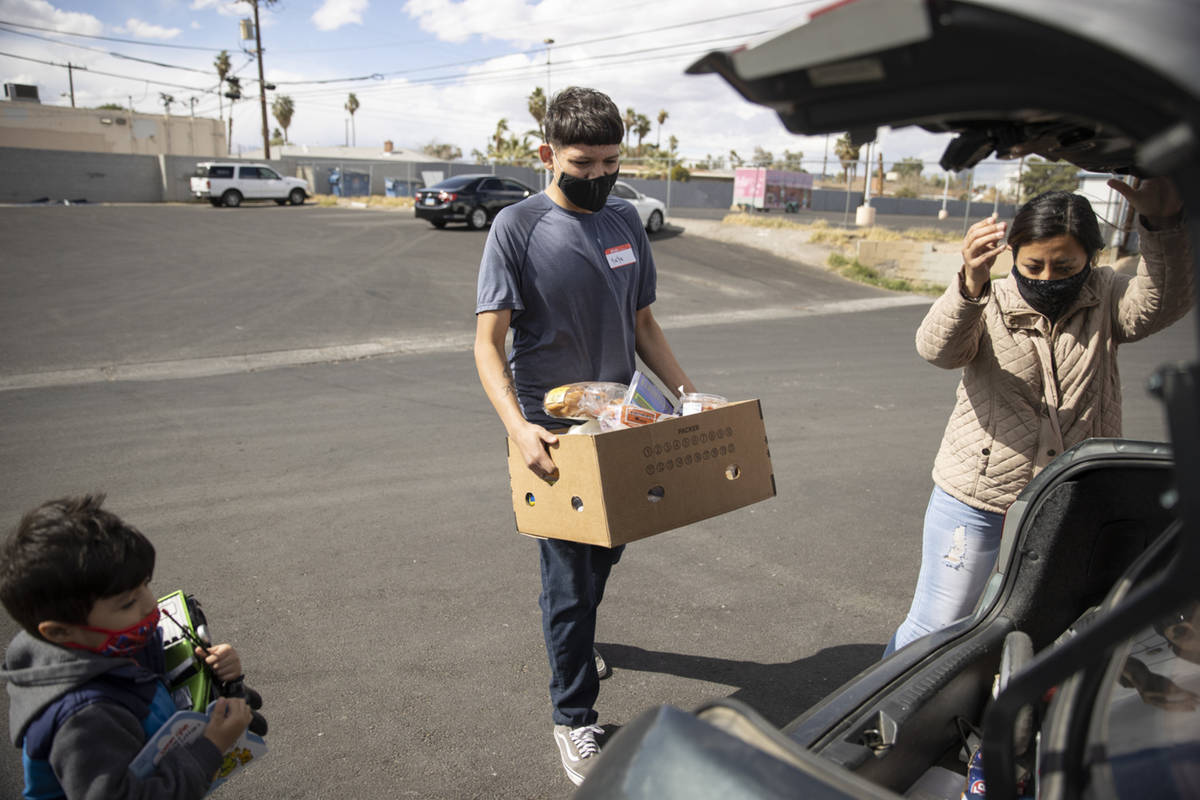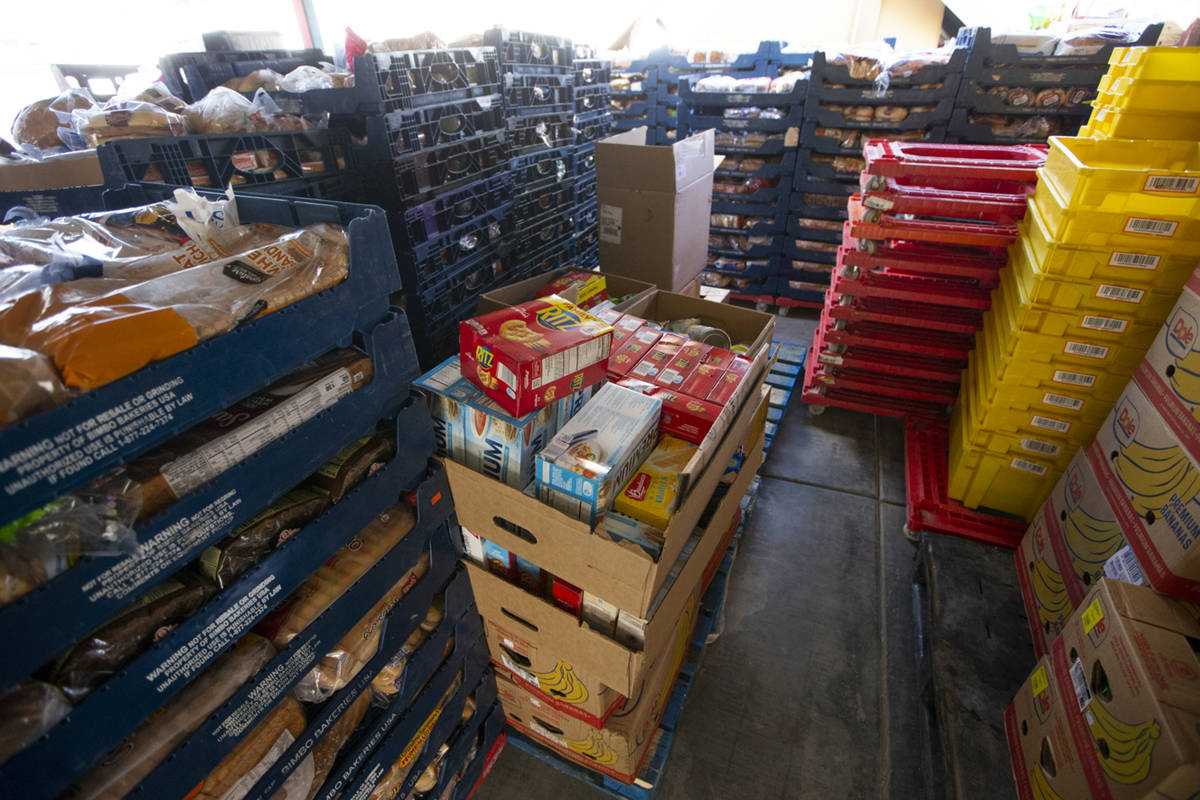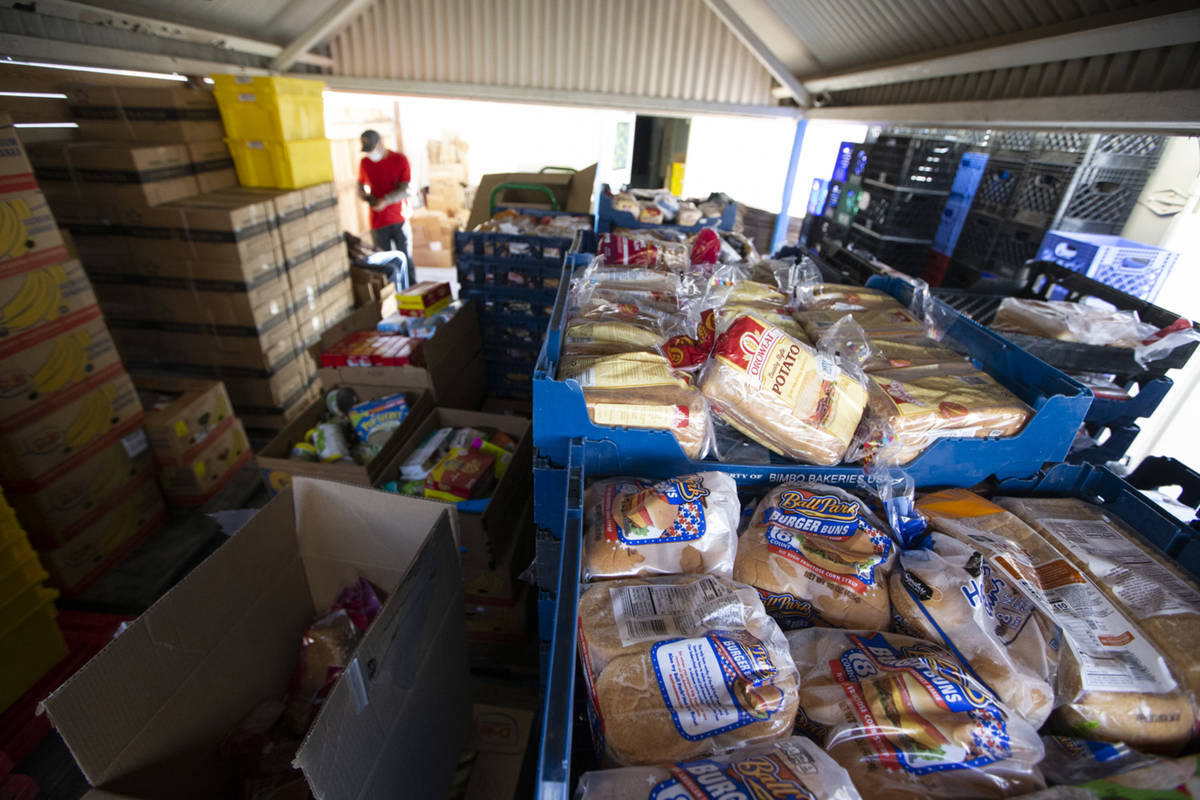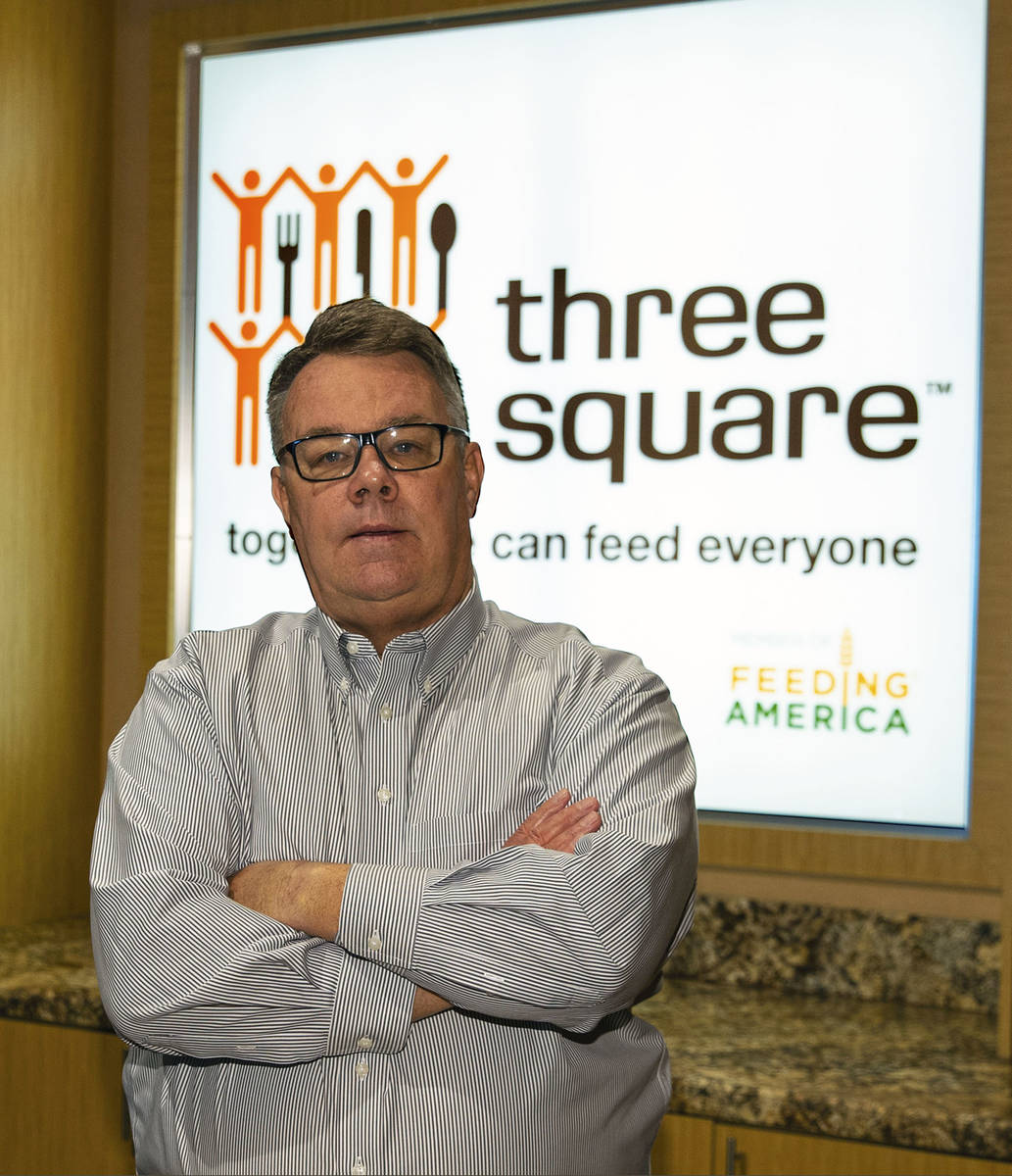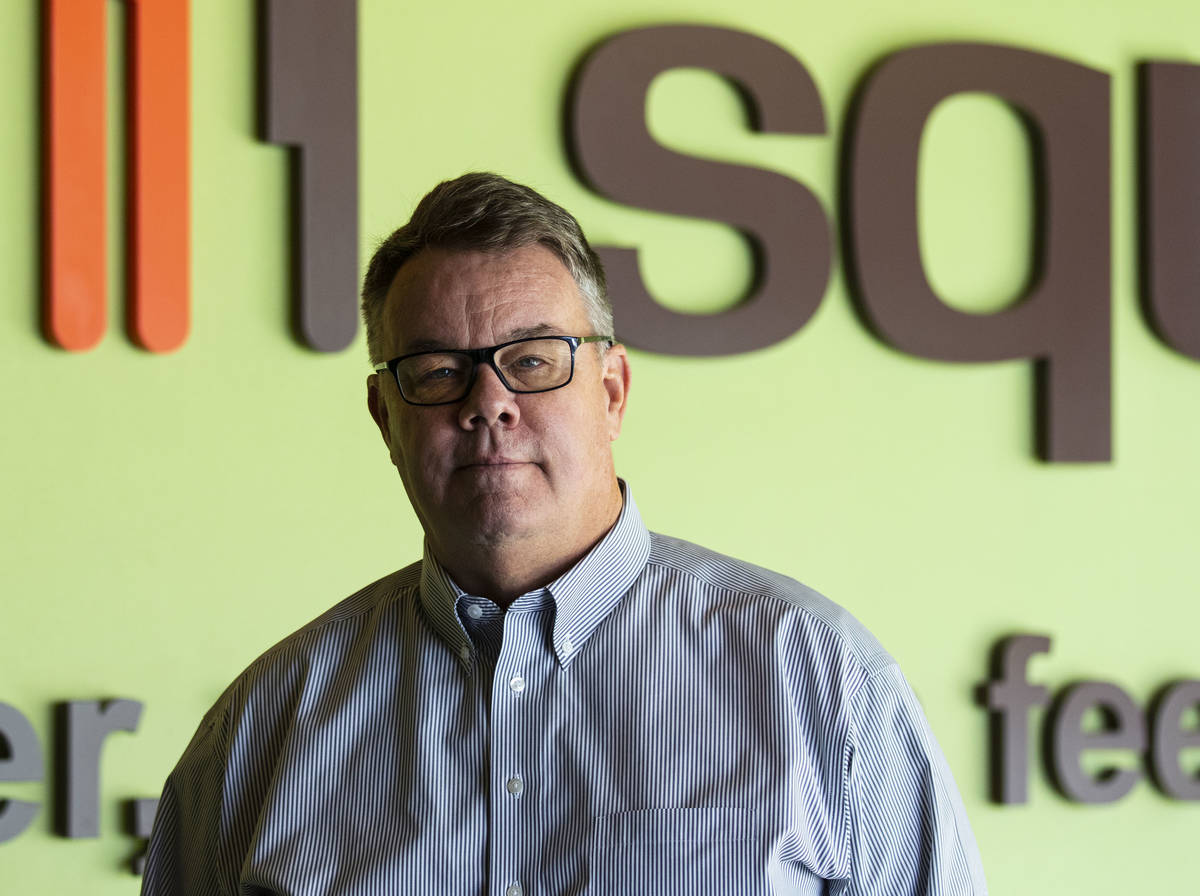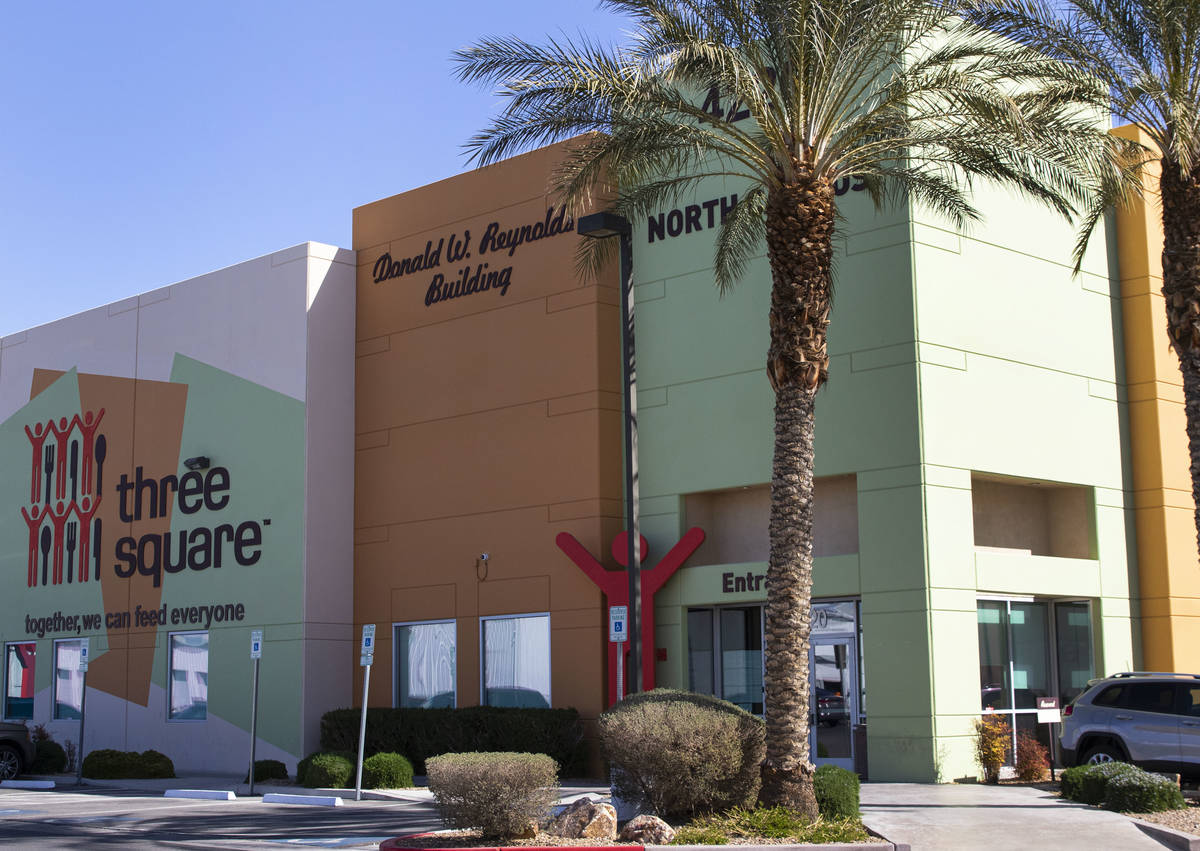Even pre-COVID, more than 270K didn’t know where their next meal would come from
When Las Vegas shut down to curb the spread of the coronavirus a year ago, nearly all of the Strip’s casino and hospitality employees were furloughed or lost their jobs, making it more difficult to feed their families.
Since the pandemic, the number of Southern Nevadans who can’t afford enough food for themselves or their children surged.
Last year, more than 20 percent of households in Clark County, or approximately 450,000 residents, were food insecure, according to recent figures from Feeding America, a national network of food banks that includes Three Square in Las Vegas.
“It feels like it’s the giant elephant in the room: We tend to know food insecurity is there, but are we really internalizing that this is really as bad as it is?” said Ian McDonough, an economics professor at UNLV’s Lee Business School. “I know the people at Three Square are, but do individuals know that one-in-three kids are food insecure? This is a real problem.”
Exacerbated by the pandemic
The Las Vegas Valley has struggled with the problem of food insecurity long before the pandemic, as more than 270,000 residents did not know where their next meal would come from. The insecurity rate for the valley in 2018 was at 12.8 percent. Nonprofit leaders and economists say efforts since the last recession to mitigate food insecurity had largely worked.
“As of 2018, we still have not recovered from the Great Recession in terms of food insecurity in Southern Nevada,” said McDonough, a researcher who studies food insecurity. “I have no idea how long it will take to get us back to that, but it’s been a decade and we still haven’t fully recovered from the last recession.”
McDonough and his co-researcher, Courtney Coughenour, a professor at UNLV’s School of Public Health, recently conducted surveys to see what the food insecurity rate was among Clark County adults and senior-led households amid the pandemic.
One of those surveys, collected last November and December, showed that the overall food insecurity rate in the county was at 33.3 percent.
That survey of more than 650 valley adult residents also found that nearly one-in-five respondents said their ability to access food had gotten worse since the pandemic.
“These are very concerning numbers, though not surprising given the images of food lines that we’ve been seeing,” said McDonough.
Disparities in food insecurity rates between minority and white households across the valley are stark: 23.7 percent of white households versus 43.8 percent of non-white Black households and 55.4 percent of non-white Hispanic households.
McDonough said the recent data “suggests a far more dire situation here locally than projected by Feeding America.”
Long road ahead
Experts say it’ll take at least several years for Clark County to see food insecurity rates drop.
“History has shown us before that whenever we have an economic slump, the needy take much longer to be restored to economic health,” said Larry Scott, chief operating officer of Three Square, Southern Nevada’s only food bank and the area’s largest hunger-relief organization.
The pandemic hit Southern Nevada’s workforce harder than any other metropolitan area in the county. Unemployment is one economic indicator that nonprofit leaders and economists look at closely.
“In the context of natural disasters, how resilient our economies are is a function of industrial diversification and we’re so saturated in one industry,” said McDonough. “We’re so driven by hospitality and tourism, that something like the coronavirus, it’s natural to project that we would be hit hardest.”
Three Square says it will take at least a couple years before the food insecurity rate drops.
“We know that we will have a protracted period of increased demand for food, and that’s what we’re planning and forecasting. We don’t anticipate any less than two years of very high levels of food insecurity,” said Scott.
Stimulus money to Nevadans has eased some of the food bank’s demands, Scott said, but “it ebbs and flows.” He said that as Las Vegas’ economy reopens, the food bank is projecting that the food insecurity rate in Southern Nevada will be between 15 and 16 percent “for at least several years.”
SNAP benefits saw an uptick
The number of Nevada new applications for benefits under the Supplemental Nutrition Assistance Program, or SNAP, shot up about 5 percent from March 2020 to December 2020 when compared to the same period in 2019.
The benefits, commonly known as food stamps, are part of a USDA program that provides low-income families and individuals with funds to spend at grocery stores. Largely seen as the first line of defense against hunger, the amount recipients receive each month varies depending on income and family size. SNAP benefits are loaded monthly onto an electronic benefit transfer card, which can be used like a debit card for purchases of food items.
According to data provided by the state Division of Welfare and Supportive Services, which administers the SNAP program in Nevada, there were 414,058 individuals enrolled in the program in January 2020.
The numbers reached a peak in May 2020 when nearly 512,000 Nevadans were on SNAP, according to state data. The last available data shows that more than 442,000 Nevadans were on the program as of December 2020.
“There is broad consensus and evidence that, even prior to COVID, SNAP is effective at mitigating food insecurity,” said McDonough. “There are many economists that concede that of the programs, SNAP tends to do what it’s supposed to do.”
Food pantries see demand
A month before the pandemic hit Las Vegas, Vic Caruso, director of City Impact Center, said the nonprofit’s walk-in food pantry near the Strip served about 100 families a day.
“And then came March: We went to around 200 families a week into COVID and now we’re averaging between 350 and 400 families a day,” said Caruso.
“The people we’re helping with now, some of them never needed assistance before. They’ve blown past their savings a few months into the pandemic, lost their medical insurance and they’re needing help for the first time,” he said.
Caruso said people have remarked to him over the past year about the “nice cars” outside a food pantry.
“You don’t know their situation: This could be the last day that their car could be repossessed,” said Caruso. “They might be going home to a house tonight and they have to move out next week. … We don’t see what’s happening behind the scenes because of COVID.”
City Impact’s pantry receives several truck deliveries from Three Square a day. The turnaround for incoming deliveries “matches” the amount of boxes and bags going out the door, Caruso said. In the past year, Three Square has donated 10 commercial-grade freezers and a refrigerator truck to help the pantry’s quadrupled demand.
The nonprofit’s ability to provide food to the needy, Caruso said, is because of agencies such as Three Square. It also receives support from Strip properties and local businesses. Recently, the pantry received a private donation that allowed it to purchase two metal containers that serve as more storage space.
“We’re always able to take all the food that comes our way and we don’t ever have to turn away a driver,” Caruso said.
Unlike some food distribution sites and pantries, Caruso said City Impact Center lets people choose and pick what they want when they come in: A variety of meat selections to milk and eggs to fresh vegetables and fruits. The process is similar to shopping at a grocery store.
“We try to keep a sense of normalcy and to make the experience like they’re shopping,” said Caruso. “They’re allowed to take as much as they can carry out once we give them a bag. Moms and parents love that we have lots of fresh vegetables and nutritious snacks like grapes.”
Drive-thru sites
Scott, of Three Square, said its drive-thru food distribution sites are seeing steady demand. Currently, the food bank gives out 5.6 million pounds of food a month, 60 percent of which is distributed through the drive-thru sites. The rest are given to agency partners such as City Impact Center and other organizations.
“They were strictly born out of the pandemic, created because of the need to distribute food with social distancing,” Scott said of the drive-thru model. “On any given day, each of our mobile sites can see anywhere between 300 and 400 cars.”
Three Square operates 12 mobile sites each week, mostly at schools throughout the valley. With the Clark County School District reopening elementary schools, Scott said they’ve recently adjusted location sites, dates and times. They’re looking to move dates to Saturdays to use school locations.
Scott said that the pandemic has shined a spotlight on food insecurity across the valley.
“One of the benefits that has come out of the pandemic is the general awareness by the public of food insecurity,” he said. “The public really rose to the occasion and we hope we can continue to receive their support. It will result in far greater food donations than in times past.”
Contact Jonathan Ng at jng@reviewjournal.com. Follow @ByJonathanNg on Twitter.



